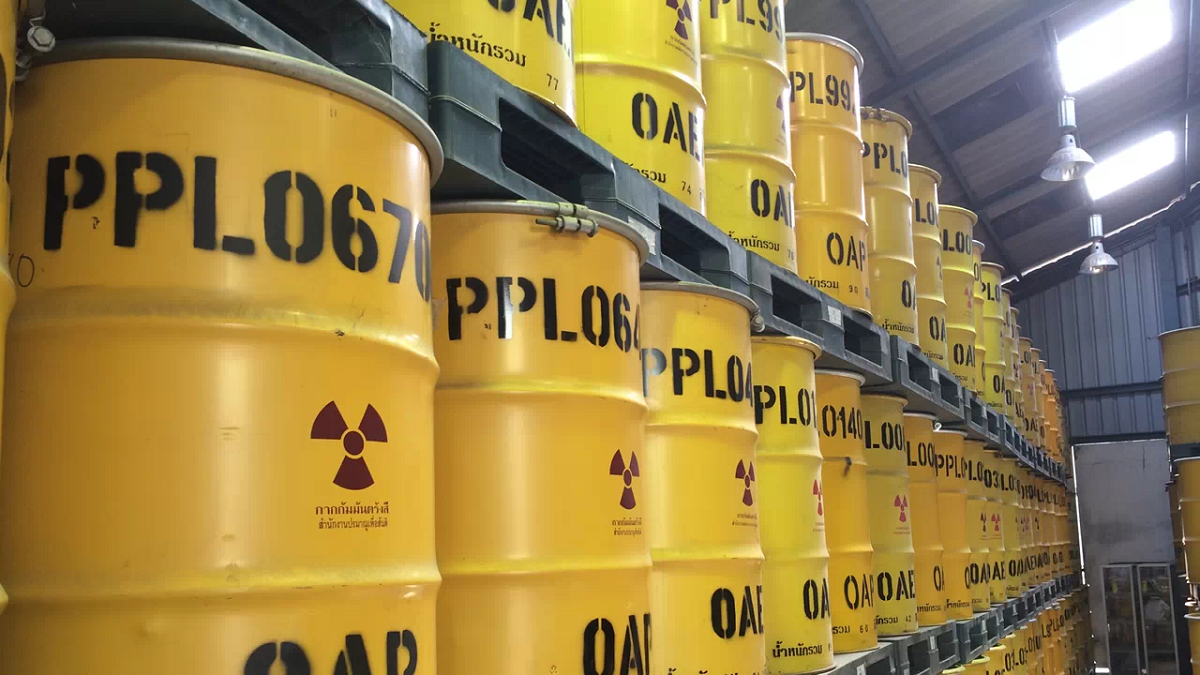
In nuclear power plants, radioactive waste result of nuclear fission in reactors. These wastes can create a serious environmental pollution problem given their high degree of toxicity and their long decomposition time. There are different ways of managing radioactive waste to reduce the environmental impact.
In this article we are going to tell you everything you need to know about radioactive waste, its characteristics and its environmental management.
Key features
Radioactive waste is considered to be any material or waste product, for which no use is foreseen, that contains or is contaminated with radionuclides in concentrations or activity levels higher than those established by the Ministry of Industry and Energy, after a favorable report from the Nuclear Safety Council. There are some criteria to be able to classify radioactive waste, according to its characteristics and its origin. Let's see what these criteria are:
- Physical state. Due to its physical state, waste is classified as solid, liquid and gaseous. Since radioactive waste is treated or regulated differently depending on whether it is solid, liquid or gaseous, this rule is very important.
- Type of radiation emitted. Radionuclides contained in radioactive waste can decompose in different ways, leading to the emission of various particles or rays. From this perspective, radioactive waste is classified into α, β and γ emissions. Since each type of radiation interacts with matter in different ways, exhibiting different penetration lengths or the same length, reaching the irradiated medium, the standard determines the protective barrier, waste management, and general radiation exposure conditions. In the storage place.
- Half-life: Depending on the half-life of the radionuclides contained in the waste (or time after which the radioactivity is halved), a classification of short-lived and long-lived wastes can be made.
- Specific activity: this criterion determines short-term protection problems, since the level of activity of the waste conditions the shielding during normal handling and transport.
- Radiotoxicity: Radiotoxicity is a property of radioactive waste that defines its danger from a biological point of view.
Radioactive waste dumping
Nuclear waste is more than 90% of uranium. Therefore, spent fuel (scrap) still contains 90% of usable fuel. It can be chemically treated and then placed in an advanced fast reactor (not yet implemented on a large scale) to stop the fuel cycle. A closed fuel cycle means less nuclear waste and more energy extracted from raw ore.
The longest-lived radioactive residues in nuclear waste are nuclides that can be used as fuel: elements of the p and sub-act series. If these materials are burned for fuel through recycling, the nuclear waste will remain radioactive for a few hundred years instead of hundreds of thousands. This greatly reduces the problem of long-term storage.
If all electricity consumption in the United States is evenly distributed among its population and everything comes from nuclear energy, the amount of nuclear waste that each person will generate each year will be 39,5 grams. If we get all our electricity from coal and natural gas, we emit more than 10,000 kg of carbon dioxide each year per person.
Where radioactive waste is stored

The storage and management of radioactive waste presents quite a few challenges. And you have to find a way to reduce environmental pollution and avoid any catastrophe. The method used when it is about eliminating radioactive waste is to bury it deep down. However, this procedure is not as simple as it sounds.
We must bear in mind that the disposal of high-level nuclear waste requires quite great depths since these wastes can be very dangerous. There are several known radioactive waste disposal sites around the world. For example, the Swedes have a facility in Oskarshamn that has long-term nuclear waste storage for over 100.000 years.
The United States had a multi-year ongoing project called the Yucca Mountain Nuclear Waste Repository in Nevada, but the Obama administration finally ended it in 2011. There are currently more than 50.000 metric tons of nuclear fuel only used in the United States. This amount accumulates and many try to make different options to be able to deal with this waste. Some think of shooting all the radioactive waste into space, burying it in deep water, giving all the waste in glaciers and all kinds of geological environments.
Reprocessing and recycling
Unsurprisingly, this is being avoided as scientists work to solve the waste problem by reprocessing and recycling waste. If these studies and investigations can be successful, the amount of radioactive waste could be reduced generated by all nuclear power plants up to 90%.
When 5% of the uranium in nuclear rods has reacted, the entire fuel rod becomes contaminated with plutonium and other products that take place in nuclear fission. These spent lo bars are efficient to generate electricity, so they must be treated as waste. The recycling of radioactive waste consists of extracting the usable elements that still remain for the production of energy. The goal of these technologies is to efficiently close the nuclear fuel cycle.
However, there are several problems that have to do with the reprocessing and recycling of nuclear waste. Among the problems that this entails, the most important is the cost and the debate of whether these methods are beneficial or not for the environment. Currently in some countries reprocessing of nuclear waste is not allowed.
We know that nuclear energy does not produce greenhouse gases, the waste that remains radioactive for more than 100.000 years. This represents a terrible problem for both people and the environment.
I hope that with this information you can learn more about radioactive waste and its characteristics.

